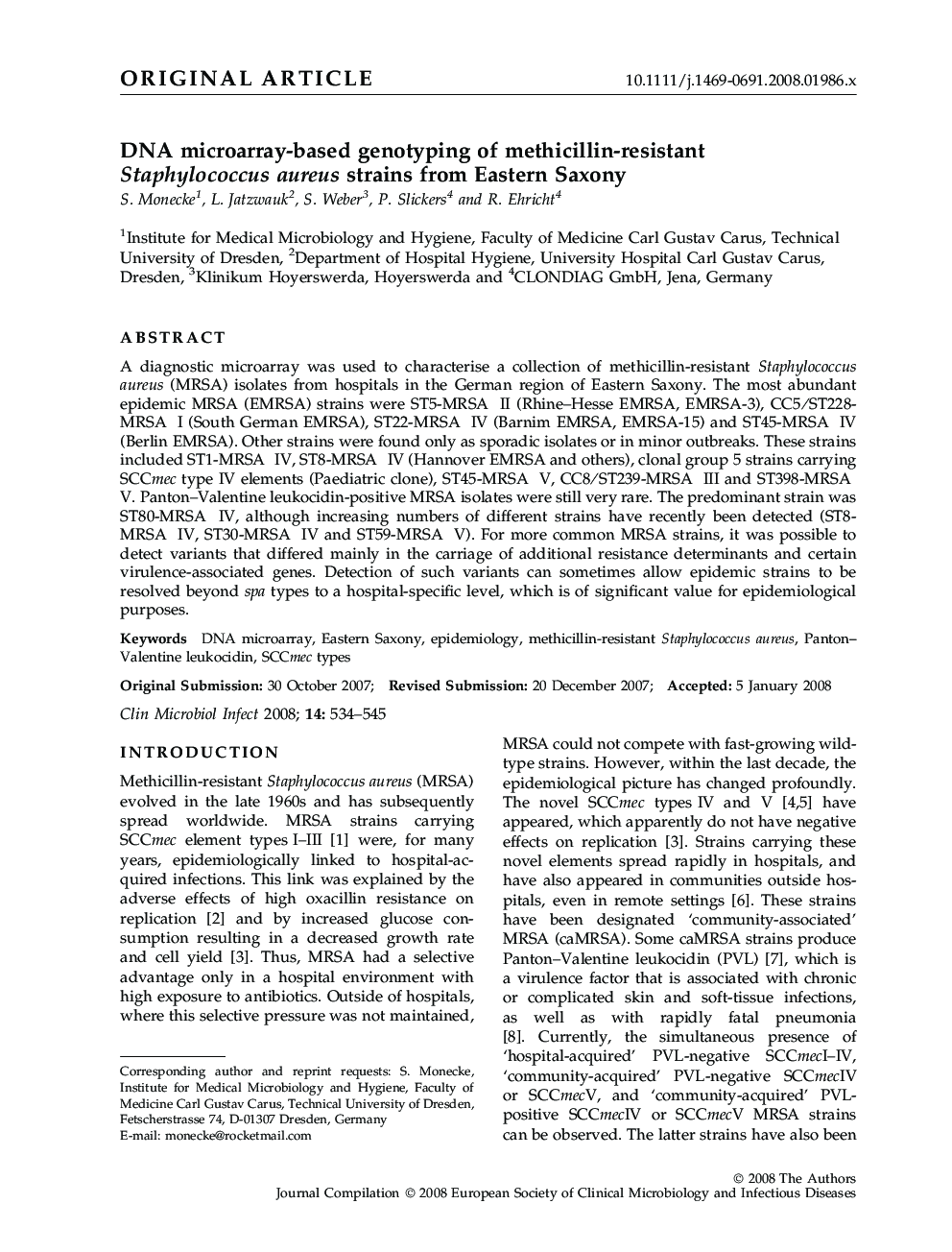| Article ID | Journal | Published Year | Pages | File Type |
|---|---|---|---|---|
| 3398630 | Clinical Microbiology and Infection | 2008 | 12 Pages |
ABSTRACTA diagnostic microarray was used to characterise a collection of methicillin-resistant Staphylococcus aureus (MRSA) isolates from hospitals in the German region of Eastern Saxony. The most abundant epidemic MRSA (EMRSA) strains were ST5-MRSA II (Rhine–Hesse EMRSA, EMRSA-3), CC5/ST228-MRSA I (South German EMRSA), ST22-MRSA IV (Barnim EMRSA, EMRSA-15) and ST45-MRSA IV (Berlin EMRSA). Other strains were found only as sporadic isolates or in minor outbreaks. These strains included ST1-MRSA IV, ST8-MRSA IV (Hannover EMRSA and others), clonal group 5 strains carrying SCCmec type IV elements (Paediatric clone), ST45-MRSA V, CC8/ST239-MRSA III and ST398-MRSA V. Panton–Valentine leukocidin-positive MRSA isolates were still very rare. The predominant strain was ST80-MRSA IV, although increasing numbers of different strains have recently been detected (ST8-MRSA IV, ST30-MRSA IV and ST59-MRSA V). For more common MRSA strains, it was possible to detect variants that differed mainly in the carriage of additional resistance determinants and certain virulence-associated genes. Detection of such variants can sometimes allow epidemic strains to be resolved beyond spa types to a hospital-specific level, which is of significant value for epidemiological purposes.
